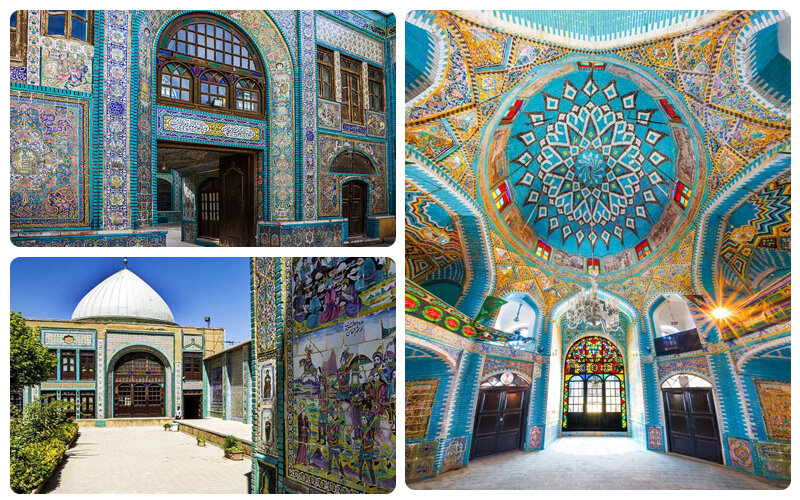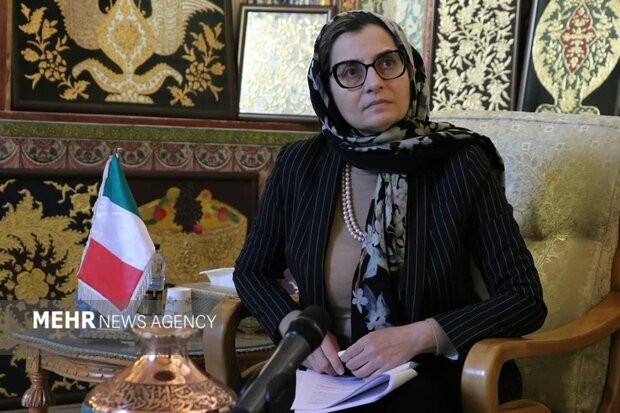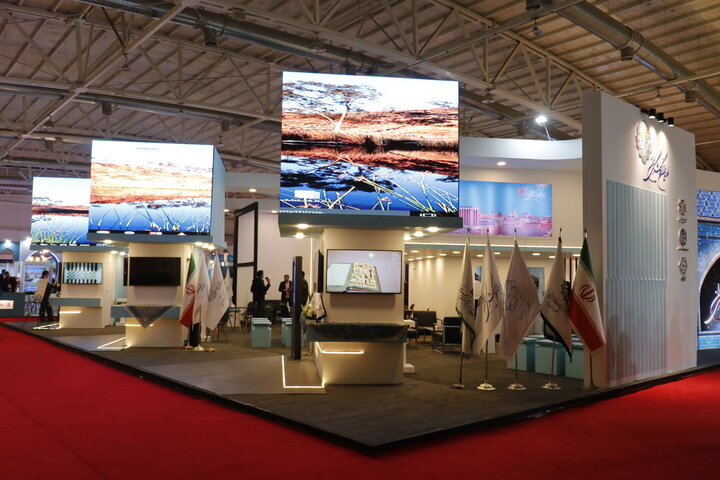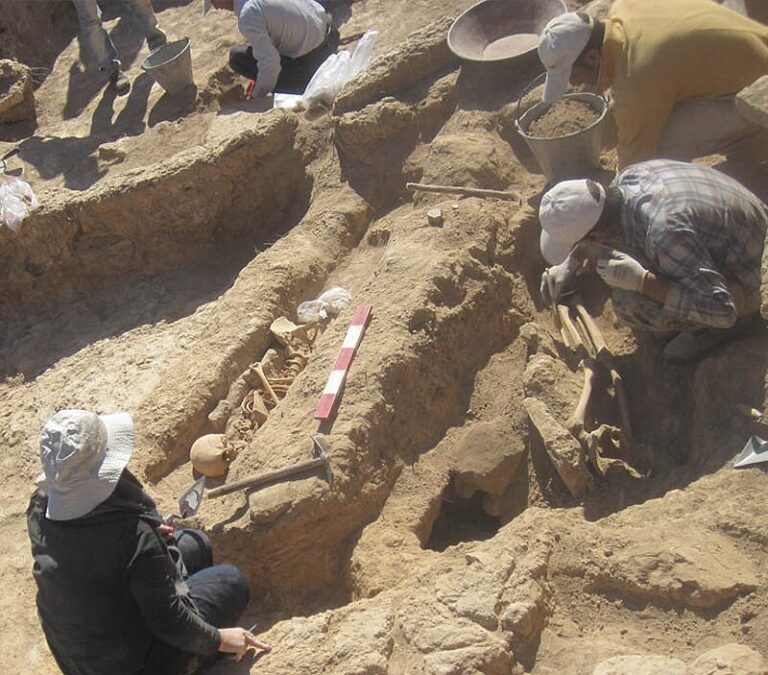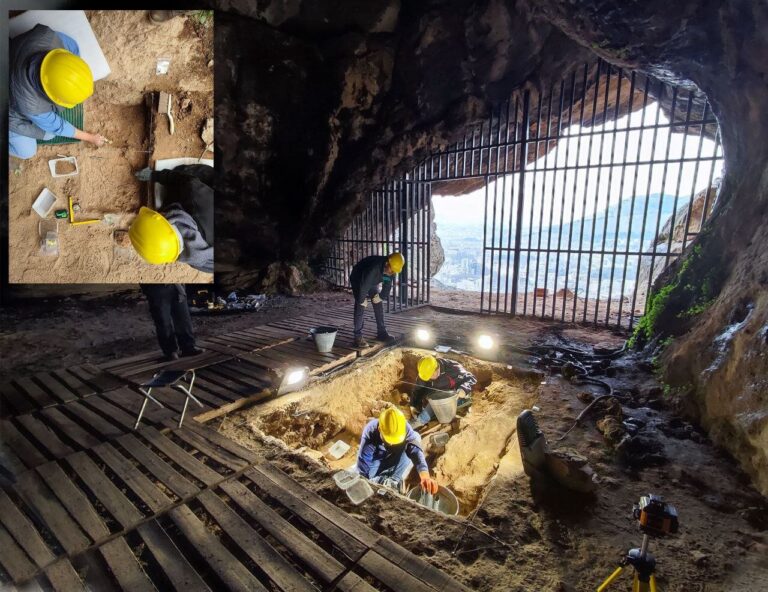Discover Tekyeh Moaven al-Molk: A Hidden Cultural Gem in Western Iran
Tekyeh Moaven al-Molk, an architectural gem situated in the vibrant city of Kermanshah, western Iran, stands as a remarkable representation of the nation’s cultural and historical legacy. This stunning site, originally constructed during the Qajar era as a Shia mourning location, has evolved into one of the most frequented religious and historical destinations in the area. Since its recognition as part of Iran’s National Cultural Heritage in 1975, Tekyeh Moaven al-Molk has continued to enchant visitors with its intricate tilework, rich history, and enduring traditions.
An Architectural Marvel
One of the standout features of Tekyeh Moaven al-Molk is its exquisite tiling, which distinguishes it from other historical structures. The decorative tiles vividly illustrate scenes from pivotal early Islamic battles, including the famed Battle of Karbala, along with portrayals of Iranian kings from the Achaemenid dynasty and elements reminiscent of Persepolis. Crafted using relief and half-relief techniques with natural colors, these tiles transform the site into a paradise for art and history enthusiasts.
The building is divided into three main sections:
- Hosseineh: Situated six meters below street level, accessible via a descending staircase of 17 steps, this area features a Sagha Khaneh adorned with a beautifully tiled portrait of Hazrat Abolfazl and a small courtyard surrounded by intricately decorated rooms.
- Abbasieh: This section includes a courtyard and a two-story building embellished with Cuerda Seca tiles, showcasing scenes of Prophet Yousef’s arrival in Canaan and portraits of notable Qajar-era statesmen. The term Cuerda Seca, which means “dry cord” in Spanish, refers to an ancient pottery decoration technique using wax resist to create distinct lines.
- Zeinabieh: Home to the mausoleum of Moaven al-Molk, this area features a tomb that was later ornamented with intricate mirror work in 1374 S.H. by the skilled artisan Haj Mohammad Shokuhi Isfahani.
A Story of Resilience
As noted by Visit Iran, Tekyeh Moaven al-Molk has survived significant historical upheavals. Following the Constitutional Movement in 1327 S.H., the building sustained considerable damage when it was bombed under the orders of Zahir al-Molk. Despite the destruction, the two opposing families—Moaven al-Molk and Zahir al-Molk—eventually reached a reconciliation, ensuring the preservation of this invaluable site. Today, it stands as a beacon of endurance and unity.
A Cultural Hub
Beyond its architectural beauty, Tekyeh Moaven al-Molk functions as a center for cultural and historical exploration. Within the Abbasieh section, visitors can find the Museum of Anthropology of Kermanshah and the Clothing and Jewelry Museum of Kermanshah, both of which provide fascinating insights into the region’s rich traditions and heritage.
A Must-Visit Destination
For those passionate about history, architecture, and culture, Tekyeh Moaven al-Molk promises a unique journey through Iran’s past. Whether you are admiring its stunning tiles, exploring the informative museums, or soaking in the spiritual atmosphere of this revered site, visitors are sure to depart with unforgettable memories. If you are planning a trip to Kermanshah, be sure to include Tekyeh Moaven al-Molk in your itinerary—it’s a place where history, art, and culture beautifully intertwine.
A Brief History
Kermanshah, formerly known as Bakhtaran, serves as the capital of Kermanshah province and was established in the 4th century CE by Bahram IV of the Sasanian dynasty. The city fell to the Arabs in 640, who renamed it Qirmasin (Qirmashin). Under Seljuk rule in the 11th century, it emerged as the chief town of Kordestan. The Safavids (1501–1736) fortified the town, while the Qajars successfully repelled an attack by Turkish forces during Fath Ali Shah’s reign (1797–1834). In 1915, during World War I, the Turkish army occupied the city, which was later evacuated in 1917. The construction of a new road in the 1950s over the historic Khorasan track significantly enhanced the city’s prominence.
